Are you torn between the vibrant cultures and breathtaking landscapes of Japan and China for your next adventure? SIXT.VN understands the dilemma! We’re here to provide a comprehensive comparison to help you make the perfect choice for your travel desires, offering solutions for seamless airport transfers, comfortable hotel bookings, and curated tour experiences. Let’s explore these amazing destinations together, focusing on vacation planning and cultural immersion.
1. What Are the Key Cultural Differences Between Japan and China for Tourists?
Japan showcases a captivating fusion of ancient traditions and modern innovations, influenced by Shintoism, Buddhism, and Confucianism. Social harmony, respect for elders, and philosophies like ikigai (reason for being) and omotenashi (impeccable hospitality) are deeply ingrained in daily life. According to a study by the Japan National Tourism Organization (JNTO) in 2023, cultural experiences are a primary motivator for tourists visiting Japan.
China, one of the world’s oldest civilizations, boasts a rich history shaped by dynastic rule and ancient cultures influenced by Confucianism, Taoism, and Buddhism. Relics like the Great Wall and Forbidden City offer glimpses into China’s past. Martial arts, Chinese medicine, and calligraphy are also significant cultural contributions. A report by the China National Tourism Administration in 2022 highlights the growing interest in cultural tourism among international visitors. The fusion of ancient philosophies and modern progress creates a dynamic cultural landscape, especially in bustling cities like Shanghai.
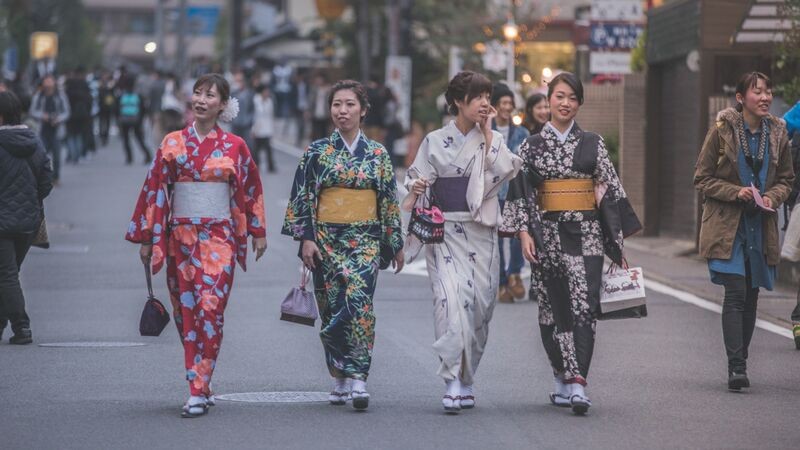 Women wearing traditional Japanese kimonos
Women wearing traditional Japanese kimonos
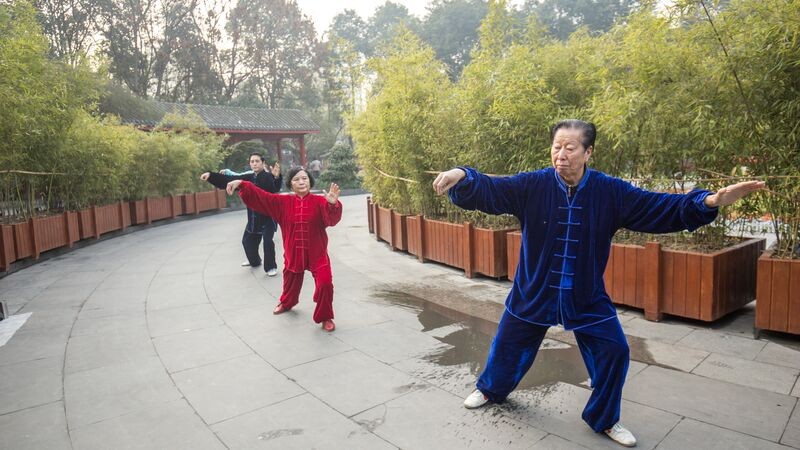 Morning tai chi in Beijing
Morning tai chi in Beijing
2. How Does the Food Scene Differ Between Japan and China, and What Should Tourists Expect?
Japanese cuisine is celebrated for its fresh, seasonal ingredients and meticulous preparation. Dishes often include rice or noodles, side dishes, and soup, with a focus on seafood, such as sashimi. Popular dishes include unagi (grilled eel), takoyaki (octopus dumplings), and shabu-shabu (Japanese-style hot pot).
Chinese cuisine varies greatly by region, generally featuring more spices, chili, and oil than Japanese food. Meat dishes with beef, pork, and duck are common, alongside seafood and tofu. Must-try dishes include Kung Pao chicken, Peking roast duck, and Mapo tofu. Sichuan cuisine is particularly known for its spicy flavors, thanks to the use of Sichuan pepper.
According to a 2023 survey by TripAdvisor, food experiences are a top priority for travelers to both Japan and China.
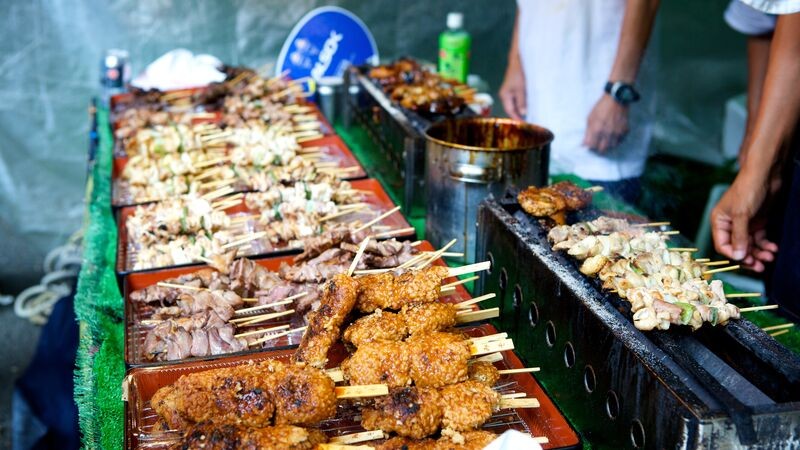 Japanese yakitori (meat skewers)
Japanese yakitori (meat skewers)
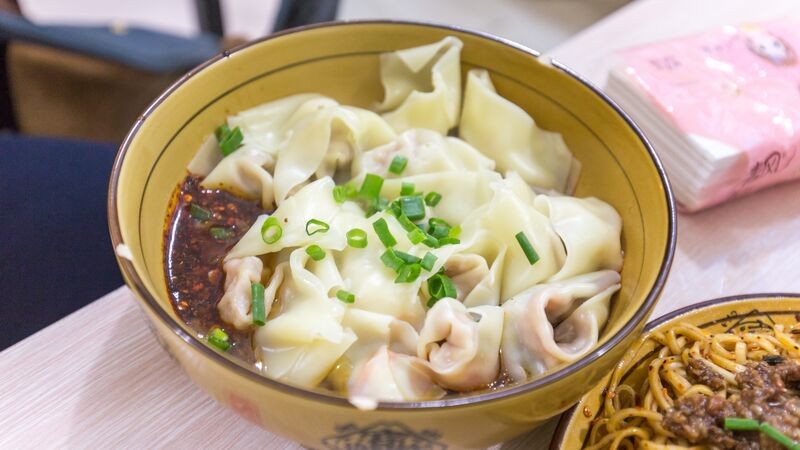 Chinese wonton soup
Chinese wonton soup
3. What Are the Must-See Cities in Japan and China for First-Time Visitors?
Japan’s cities offer a blend of modernity and tradition. Tokyo is renowned for its futuristic technology and ancient landmarks, offering experiences like exploring neon-lit streets and enjoying matcha in Harajuku. Kyoto is a cultural hub with shrines, temples, and the Gion geisha district. Matsumoto offers castles and traditional storehouses, while Hiroshima provides historical sites and a vibrant food scene.
China boasts some of the world’s oldest and largest cities. Beijing, the capital, features seven UNESCO World Heritage sites, including the Forbidden City and sections of the Great Wall. Shanghai showcases a mix of cultures and architecture, with art deco buildings and canals.
SIXT.VN offers convenient services in both countries, making it easier to explore these urban landscapes with airport transfers, hotel bookings, and city tours.
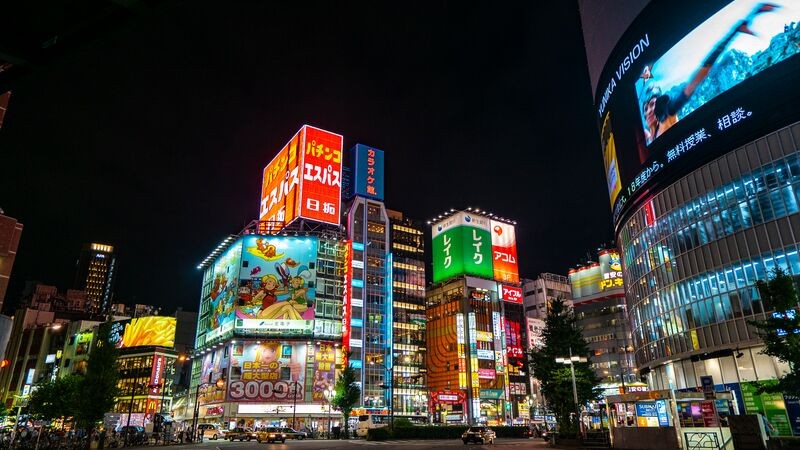 The neon-lit streets of Tokyo
The neon-lit streets of Tokyo
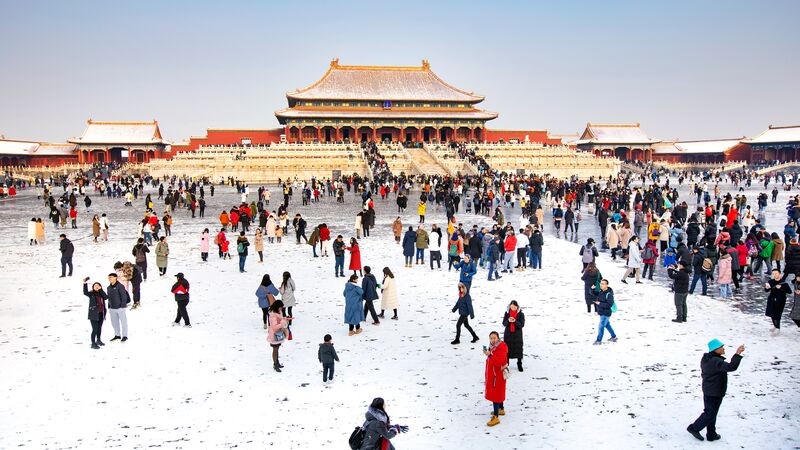 A snow-dusted Forbidden City
A snow-dusted Forbidden City
4. How Do the Natural Landscapes of Japan and China Compare, and What Outdoor Activities Are Available?
Japan’s natural beauty includes towering peaks, dense forests, and pristine coastlines. Mount Fuji is a prominent landmark due to the country’s location on the Ring of Fire. Activities include hiking on Mount Takao and exploring the Arashiyama Bamboo Grove in Kyoto. Takachiho Gorge in Miyazaki offers water-based pursuits, and Hokkaido’s onsens provide relaxation.
China, the third-largest country in the world, features diverse landscapes from wetlands to plateaus and deserts to rice terraces. Guilin’s karst hills, the Rainbow Mountains in Zhangye Geopark, and the floating peaks of Zhangjiajie (featured in the movie Avatar) are among the remarkable sights.
SIXT.VN can help arrange your transportation to these scenic spots, ensuring a hassle-free experience with reliable car services and local expertise.
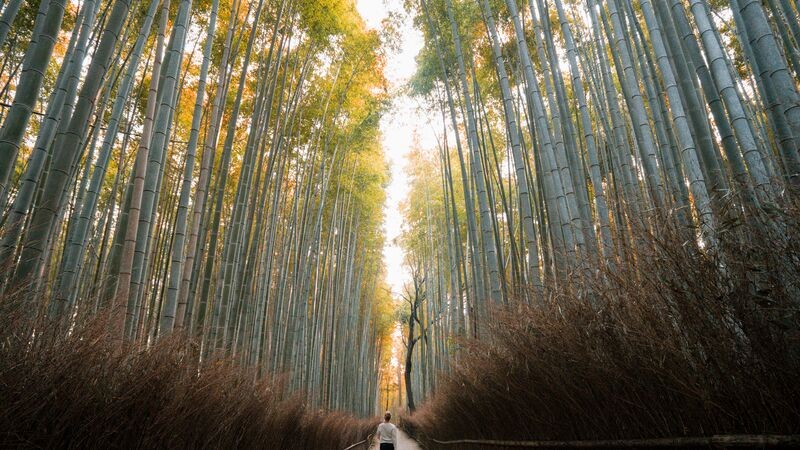 Arashiyama Bamboo Grove
Arashiyama Bamboo Grove
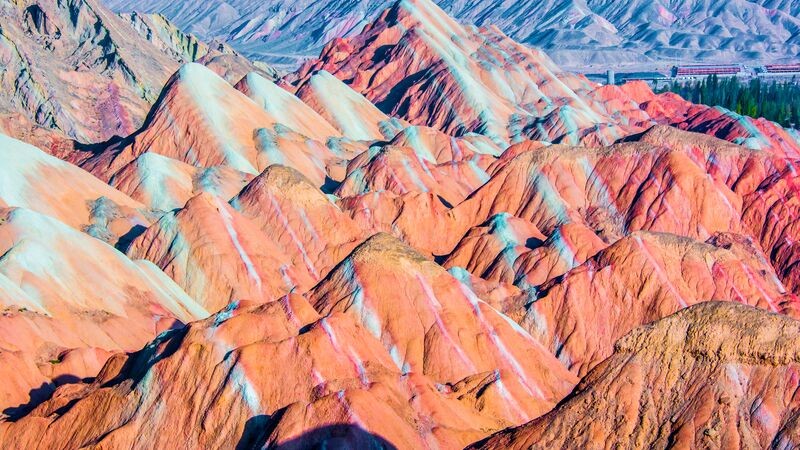 The Rainbow Mountains in Zhangye National Geopark, Gansu
The Rainbow Mountains in Zhangye National Geopark, Gansu
5. What Is the Best Time to Visit Japan and China Based on Weather Conditions?
Japan experiences four distinct seasons. Spring (March to May) is popular for cherry blossoms, while September to November offers autumn foliage. Winter is mild in some regions, with opportunities for skiing in northern Japan.
China’s weather varies significantly due to its numerous climate zones. Summer and autumn are best for hiking, although tourism peaks during June and August. Winter offers cultural festivals like the Harbin Ice and Snow Festival and Chinese New Year. Shoulder months like October or May provide milder weather and fewer crowds.
According to weather data, the best times to visit Japan are spring and autumn, while China is most enjoyable during late spring and early autumn.
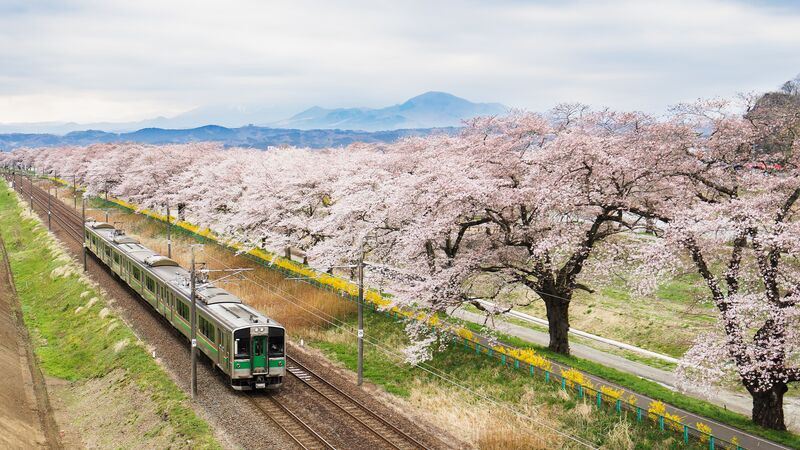 A scenic train ride in Japan during cherry blossom season
A scenic train ride in Japan during cherry blossom season
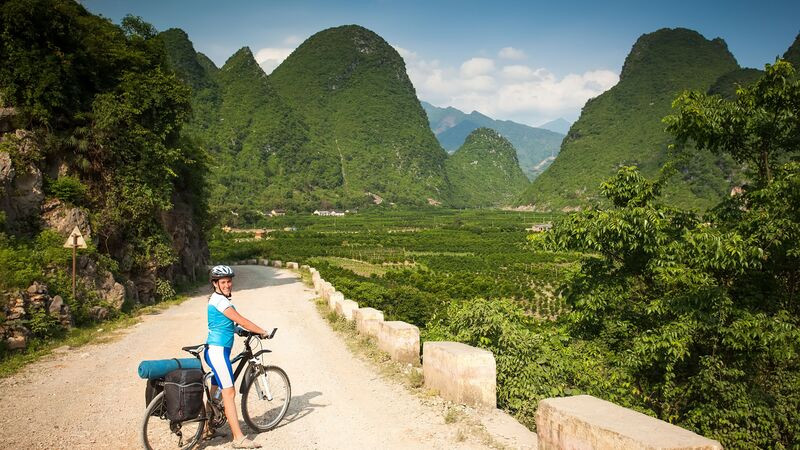 Cycling in Yangshuo
Cycling in Yangshuo
6. How Do Japan and China Compare in Terms of Travel Costs and Budgeting?
Japan is generally considered more expensive than China for tourists. Accommodation, transportation, and dining can be pricier in Japan, particularly in major cities like Tokyo and Kyoto. However, Japan offers efficient public transportation and a range of lodging options to suit different budgets.
China provides more budget-friendly travel options, especially in smaller cities and rural areas. Accommodation, food, and transportation are generally more affordable, but costs can increase in major cities like Beijing and Shanghai.
According to a 2023 analysis by Budget Your Trip, the average daily cost for travelers in Japan is around $150-$200, while in China, it’s approximately $80-$120.
7. What Are Some Essential Travel Tips for Visiting Japan and China?
For Japan, it’s helpful to learn basic Japanese phrases, carry cash (as some smaller establishments may not accept credit cards), and be aware of cultural etiquette, such as removing shoes indoors. Using Japan Rail Pass can be an economical choice for long-distance travel.
In China, learning Mandarin phrases, using mobile payment apps like Alipay or WeChat Pay, and understanding local customs are essential. VPNs are often necessary to access certain websites and apps due to internet restrictions.
SIXT.VN provides pre-travel assistance and local support to help you navigate these cultural nuances and ensure a smooth travel experience.
8. How Do Japan and China Cater to Different Travel Styles (e.g., Solo, Family, Luxury)?
Japan caters well to solo travelers with its safe environment and efficient transportation. Families can enjoy theme parks, cultural experiences, and kid-friendly attractions. Luxury travelers can indulge in high-end hotels, Michelin-starred restaurants, and exclusive cultural experiences.
China offers diverse experiences for different travel styles. Solo travelers can explore historical sites and vibrant cities. Families can visit attractions like the Great Wall and panda reserves. Luxury travelers can enjoy opulent hotels, private tours, and fine dining.
SIXT.VN offers personalized travel planning to cater to your specific needs, whether you’re traveling solo, with family, or seeking a luxury experience.
9. What Unique Cultural Experiences Can Tourists Have in Japan and China?
In Japan, tourists can participate in tea ceremonies, visit traditional gardens, wear a kimono, and stay in a ryokan (traditional inn). Attending a sumo wrestling match or a traditional festival offers deeper cultural immersion.
In China, experiences include visiting the Great Wall, exploring the Forbidden City, watching a Peking opera, and taking a calligraphy class. Exploring local markets and trying regional cuisines are also enriching cultural activities.
SIXT.VN can arrange exclusive cultural tours and activities to enhance your travel experience in both Japan and China.
10. How Easy Is It to Get Around in Japan and China for Non-Native Speakers?
Japan has an excellent public transportation system, including bullet trains and subway networks, making it easy to navigate. Signage is often available in English, and many locals are willing to assist travelers.
China’s transportation infrastructure has improved significantly, with high-speed trains, extensive bus networks, and ride-sharing services. However, language barriers can be more challenging, so having translation tools and pre-booked transportation can be beneficial.
SIXT.VN offers translation assistance and reliable transportation services, ensuring you can easily get around in both countries regardless of the language.
11. What Are Some Emerging Tourism Trends in Japan and China?
In Japan, sustainable tourism, eco-tourism, and rural tourism are gaining popularity. Travelers are increasingly seeking authentic experiences and off-the-beaten-path destinations. According to JNTO, there’s a growing interest in exploring Japan’s regional areas beyond the major cities.
China is seeing a rise in adventure tourism, cultural heritage tourism, and wellness travel. Travelers are exploring remote regions, participating in cultural festivals, and seeking rejuvenating experiences. The China Tourism Academy reports a growing demand for personalized and experiential travel products.
SIXT.VN stays updated with these trends, offering tailored travel packages that cater to evolving traveler preferences.
12. How Safe Are Japan and China for Tourists?
Japan is renowned for its low crime rate and safe environment. Travelers can feel secure exploring cities and rural areas, even at night. According to the Global Peace Index, Japan consistently ranks as one of the safest countries in the world.
China is generally safe for tourists, with a strong emphasis on public safety. However, it’s advisable to be aware of petty theft in crowded areas and to follow local guidelines. The U.S. Department of State provides safety information for travelers to China.
SIXT.VN prioritizes your safety, providing reliable transportation and local assistance to ensure a secure travel experience.
13. What Travel Apps and Resources Are Useful for Visiting Japan and China?
For Japan, useful apps include Japan Official Travel App, Google Translate, HyperDia (for train schedules), and Gurunavi (for restaurant information). Websites like JNTO and Japan-Guide.com offer valuable travel information.
In China, helpful apps include Pleco (for translation), WeChat (for communication and payment), Didi Chuxing (for ride-sharing), and Ctrip (for travel booking). Websites like China National Tourism Administration and TravelChinaGuide.com provide useful resources.
SIXT.VN provides pre-travel information and recommendations for useful travel apps and resources to enhance your trip planning.
14. What Are Some Common Misconceptions About Traveling to Japan and China?
A common misconception about Japan is that it is solely about ancient traditions. In reality, Japan is a modern, technologically advanced country with a vibrant pop culture scene.
For China, a misconception is that it’s unsafe or difficult to navigate. While language barriers can be a challenge, China is generally safe for tourists, and its transportation infrastructure has improved significantly.
SIXT.VN addresses these misconceptions by providing accurate information and practical travel tips to ensure a smooth and enjoyable experience.
15. How Can SIXT.VN Enhance My Trip to Japan or China?
SIXT.VN provides a range of services to enhance your trip to Japan or China, including:
- Airport Transfers: Enjoy seamless and comfortable transfers from the airport to your hotel.
- Hotel Bookings: Choose from a wide selection of hotels to suit your budget and preferences.
- Curated Tours: Explore the best of Japan and China with our expertly designed tours.
- Local Support: Benefit from our local expertise and support throughout your trip.
Ready to plan your adventure? Contact SIXT.VN today to create your perfect itinerary and experience the best of Japan or China!
Address: 260 Cau Giay, Hanoi, Vietnam
Hotline/Whatsapp: +84 986 244 358
Website: SIXT.VN



